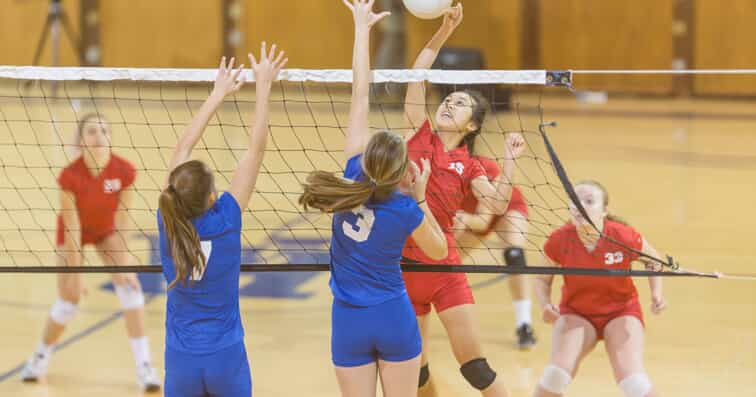The Risks of Youth Sport Specialization
Jan 4, 2023

Last fall, the National Athletic Trainers’ Association sponsored the first youth sport specialization awareness week. Sport Specialization is defined as “the act of participating in and/or training for a single sport year-round.”
Over the last several years, many athletes, parents and coaches have been under the impression that to become an elite athlete one should focus on only one sport and devote a considerable amount of time to that sport playing on multiple teams. This increase in specialization has been fueled by the push to obtain school scholarships and ultimately make it to the professional level to collect the big payoff.
The truth is, about half of college athletes played multiple sports until their late teens. Also, it is reported college coaches prefer multiple sport athletes because they perceive them to perform better at the intercollegiate level.
Unfortunately, the age at which kids are being expected to “specialize” is dropping and there are children in grade school being encouraged to play on multiple club teams simultaneously as well as a school sanctioned team.
This has been attracting the attention of the medical community; many studies are being performed and organizations are looking into the repercussions of early sport specialization. Unfortunately, what we are seeing is an increasing amount of overtraining syndrome, athlete burnout, youth/adolescent stress and anxiety, and athlete dropout.
Focusing on only one sport increases the risk of overuse injuries such as stress fractures since the athlete repetitively puts the same stress/strain throughout the same areas of the body. By “cross-training” or playing other sports the body is used in different ways allowing the entire body to be strengthened without repetitive strain. A study of over 1,000 high school athletes found athletes who specialized in one sport were twice as likely to report a lower extremity injury as compared to those who played multiple sports.
Playing on multiple teams increases both physical, psychological, and emotional demand on the athlete. From a physical standpoint, this does not allow the proper time for the body tissue to heal, thus dramatically increasing the risk of significant injury. These overuse injuries can range from multiple months out of all sports to the end of an athletic career. Psychologically speaking, this can have multiple negative effects. If there is an injury and multiple months are missed, it is very common for the athlete to experience profound depression. Also, just the act of playing on multiple teams can lead to internal and external pressures causing loss of enjoyment, burnout, anxiety and depression.
Fortunately, the National Athletic Trainers’ Association, National Sports Medicine Institute, and the American College of Sports medicine have guidelines to follow to prevent the negative effects of youth sport specialization.
- Delay Sport Specializing in a single sport for as long as possible:Adolescent and young athletes should strive to participate in, or sample, a variety of sports. This recommendation supports general physical fitness, athleticism, and reduces injury risk in athletes.
- One team at a time:Adolescent and young athletes should participate in one organized sport per season. Many adolescent and young athletes participate or train year-round in a single sport, while competing in other organized sports simultaneously. Total volume of organized sport participation per season is an important risk factor for injury.
- Less than eight months per year:Adolescent and young athletes should not play a single sport more than eight months per year.
- No more hours per week than age in years:Adolescent and young athletes should not participate in organized sport and/or activity more hours per week than their age (i.e., a 12-year-old athlete should not participate in more than 12 hours per week of organized sport).
- Two days of rest per week:Adolescent and young athletes should have a minimum of two days off per week from organized training and competition. Athletes should not participate in other organized team sports, competitions, and or/training on rest and recovery days.
- Rest and Recovery time from organized sport participation:Adolescent and young athletes should spend time away from organized sport and/or activity at the end of each competitive season. This allows for both physical and mental recovery, promotes health and well-being, and minimizes injury risk and burnout/dropout.
The unfortunate thing is, I, personally, am seeing this relatively frequently and am seeing it here in our community. My hope is to help reduce these injuries, keep our kids playing sports, and reduce the time missed due to overuse injuries. I am passionate about preventing overtraining and am thankful several organizations are bringing attention to this important issue.
Brian Gould, DO
Related articles

Helping children understand Alzheimer’s disease
November 4, 2019

Raising Healthy Kids: A Blog from Your Trusted Pediatric Nurse Practitioner
May 19, 2021

Healing Strategies For Adverse Childhood Experiences
September 21, 2022